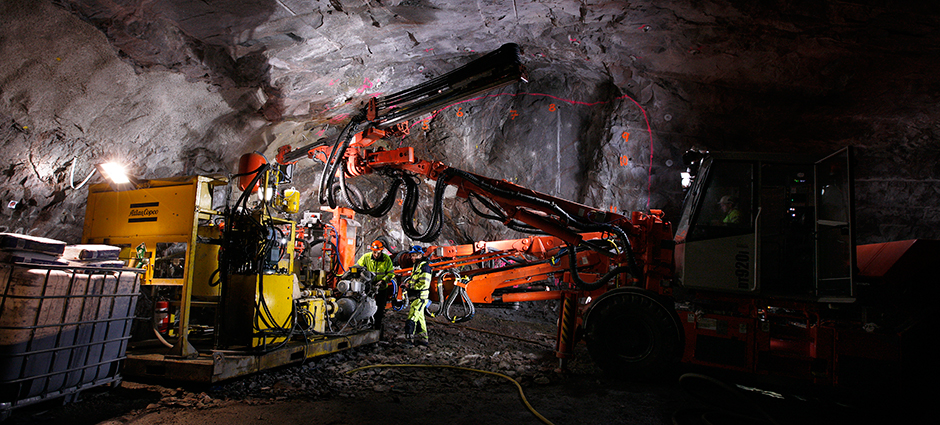The Äspö Hard Rock Laboratory – three decades in the service of research
In 1986 surveying work began at Äspö. SKB wanted to explore the possibility of building an underground laboratory there. This was the beginning of the research and technological development that has been undertaken in and around Äspö for almost three decades.
It was in its 1986 research, development and demonstration programme that SKB presented the first plans to construct its own underground laboratory. These plans extended from 1987 until 2010 and included for instance detailed studies of natural barriers and their function in a final repository, developing methods and technologies for a final repository and also demonstrating what its different sections would look like.
Methodological developments
The first development measures were already under way before construction of the laboratory had even begun. In preparation for and during the construction work different methods of studying bedrock from the surface were tested. This is what we call a site investigation. We were then able to develop testing methods as well as the models used to describe the features of the bedrock. First and foremost we wanted to make sure that the holes we had drilled from the surface provided enough information about what there was deep down. Later we were able to study the rock in detail in the tunnels and shafts and compare the results from our site investigation with reality. These methods were then used for the site investigations at Forsmark and Oskarshamn before the final choice of the site of the Spent Fuel Repository was made.
The construction of the Äspö Laboratory took place between 1990 and 1995. This work gave us important technological experience and we learnt a lot about the design and construction of underground facilities. For example how blasting and drilling could be used to bore the laboratory’s tunnels. This also gave us the possibility of studying how the rock around a tunnel is affected by the different methods and also what impact there could be on the flow patterns of groundwater and the chemicals it contained.
Experimental installations
When the Äspö Laboratory was finally commissioned in 1995, research on the methods to be used for the final repository and technological development could start. A number of experiments have been conducted to probe the features of the rock and not least what significance these features could have for the long-term safety of a final repository for spent nuclear fuel. This can, for instance, concern how the rock slows down the movement of radioactive substances or how microbes affect conditions at this depth.
In addition, much of what we do concerns the technological barriers in the final repository. How we can achieve a safe final repository through high-quality technological implementation. Some of our most important experiments at the Äspö Laboratory have been full-scale trials. They enable us to test our technology in full scale and in genuine conditions. One of the larger and more important full-scale experiments is the Prototype Repository, which can be described simply as a copy of a final repository, although without any spent nuclear fuel.
In recent years our activities have focused more on adapting technology and methods to the industrial process that will be needed to operate the Spent Fuel Repository.
